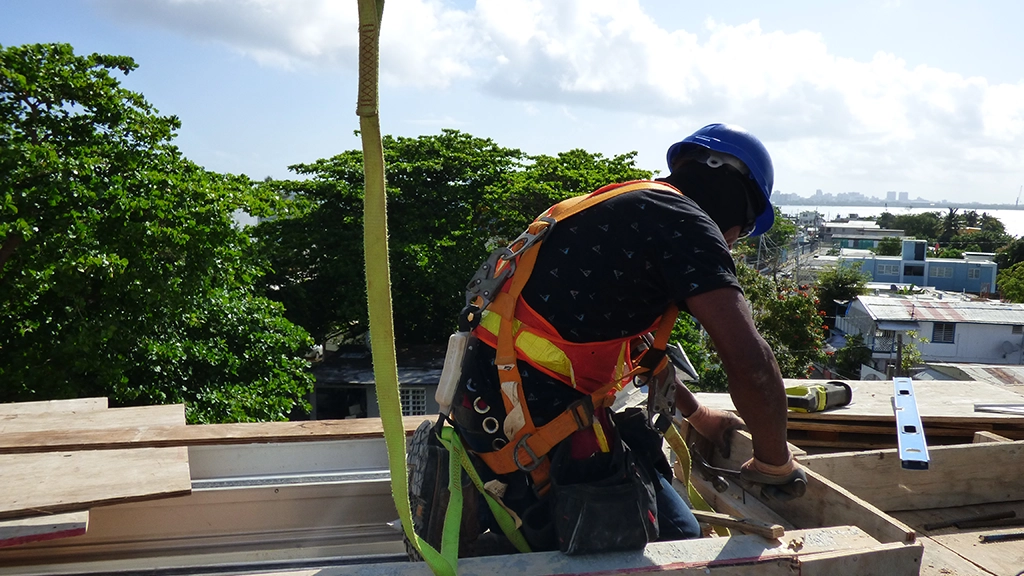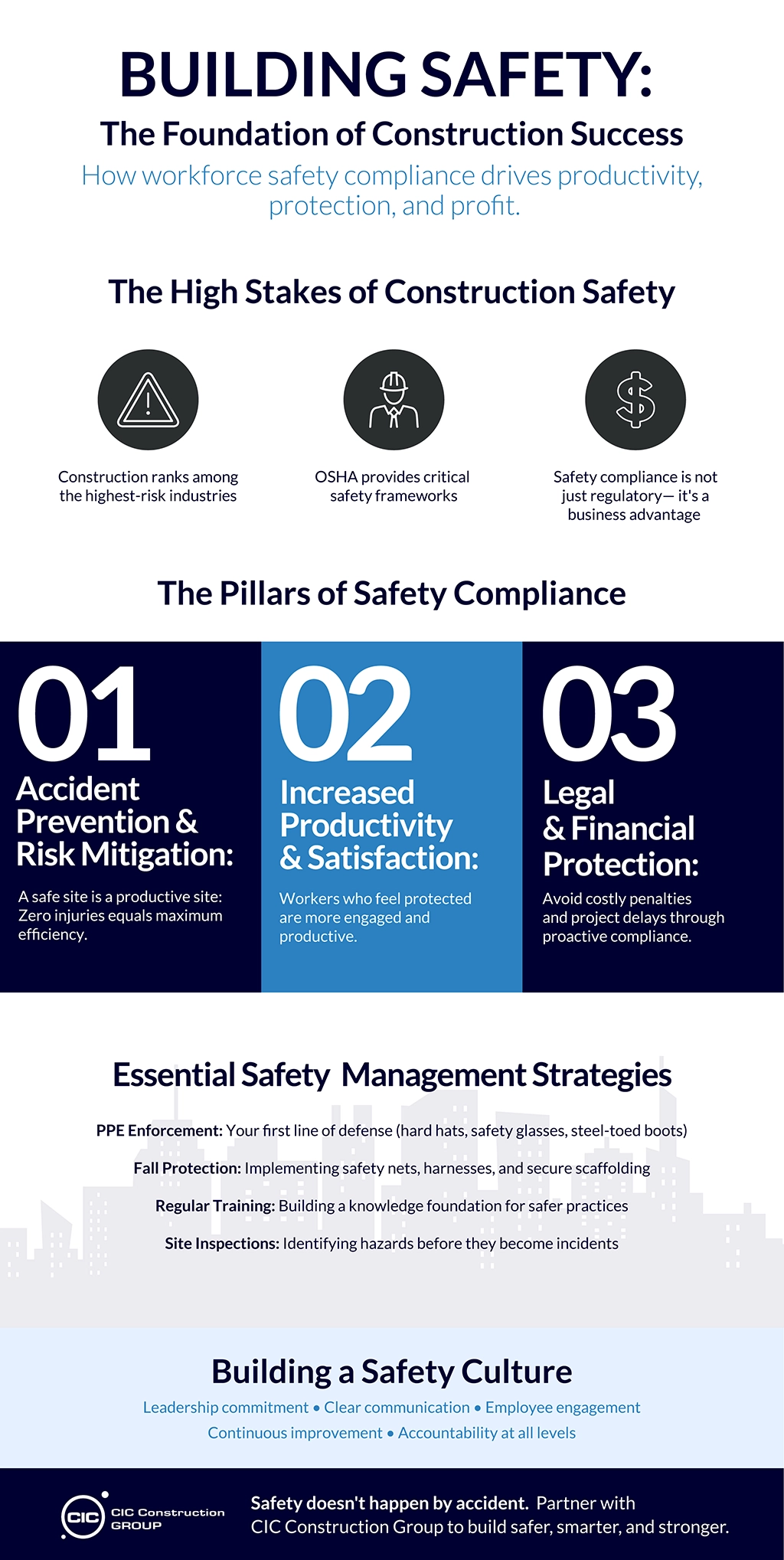



The construction industry is one of the most dynamic yet high-risk sectors, requiring strict adherence to safety protocols to protect workers, maintain efficiency, and ensure compliance with regulations. Workforce safety compliance is not just a legal requirement—it is a crucial element in fostering a culture of accountability, minimizing risks, and boosting overall productivity.
With the increasing complexity of construction projects, companies like CIC Construction Group prioritize safety compliance to safeguard their workforce while maintaining high operational standards. This blog explores the significance of safety compliance in construction, key measures for enforcement, and how technology is revolutionizing workplace safety.
Safety compliance in construction refers to the adherence to established safety standards, regulations, and laws designed to protect workers from hazards. Governing bodies such as the Occupational Safety & Health Administration (OSHA) set these regulations to mitigate risks associated with heavy machinery, high elevations, hazardous materials, and more.
A robust safety compliance management system encompasses policies, procedures, and training programs to prevent workplace accidents. Companies that prioritize safety compliance benefit from fewer injuries, higher productivity, improved employee morale, and enhanced reputation within the industry.
Construction sites are inherently hazardous, with potential risks including falls, equipment malfunctions, and exposure to toxic substances. OSHA regulations provide a structured framework to identify and manage occupational health and safety risks.
Companies like CIC implement strict safety measures to achieve zero injuries, reinforcing how compliance leads to a safer, more controlled work environment.
A well-managed safety program reduces workplace incidents, allowing employees to focus on tasks without the distraction of unsafe conditions. Studies show that reducing perceived health risks enhances job satisfaction, increasing engagement and overall efficiency.
Non-compliance can lead to severe legal repercussions, project delays, and financial losses due to lawsuits or regulatory fines. Adhering to OSHA and other safety regulations not only prevents costly penalties but also secures a company’s reputation as a reliable and responsible contractor.
To ensure workforce safety, construction firms must implement a multifaceted approach that includes proper training, equipment usage, and continuous monitoring. Here are critical steps to maintain compliance:
Proper PPE is the first line of defense against workplace hazards. Essential protective gear includes:
Falls are one of the leading causes of fatal injuries in construction. To prevent falls:
An informed workforce is a safer workforce. Regular OSHA-certified safety training sessions should cover:
Routine safety inspections help identify hazards before they become major issues.


The construction industry is experiencing a technological revolution in workplace safety, with advancements such as:
AI and machine learning analyze construction site conditions in real-time, detecting unsafe behaviors and issuing alerts.
Drones are used to survey hard-to-reach areas, reducing the need for workers to enter hazardous zones. They provide high-resolution footage for structural assessments and safety monitoring.
IoT-connected devices can:
Wearable technology, such as smart helmets and sensor-equipped boots, alerts workers and supervisors when they enter high-risk areas, helping to prevent injuries before they occur.
Beyond regulations and equipment, fostering a culture of safety is key to long-term compliance. Construction firms should:
Encourage open communication about safety concerns
Reward employees for adhering to safety protocols
Implement a “safety-first” mindset at all levels
By prioritizing safety, CIC ensures efficient project execution, employee well-being, and long-term business success.
Workforce safety compliance is not just about avoiding fines—it’s about protecting lives, enhancing productivity, and building a stronger industry.
Construction safety is an investment in people, reputation, and future growth. At CIC Construction Group, we don’t compromise on safety—because safety doesn’t happen by accident.

